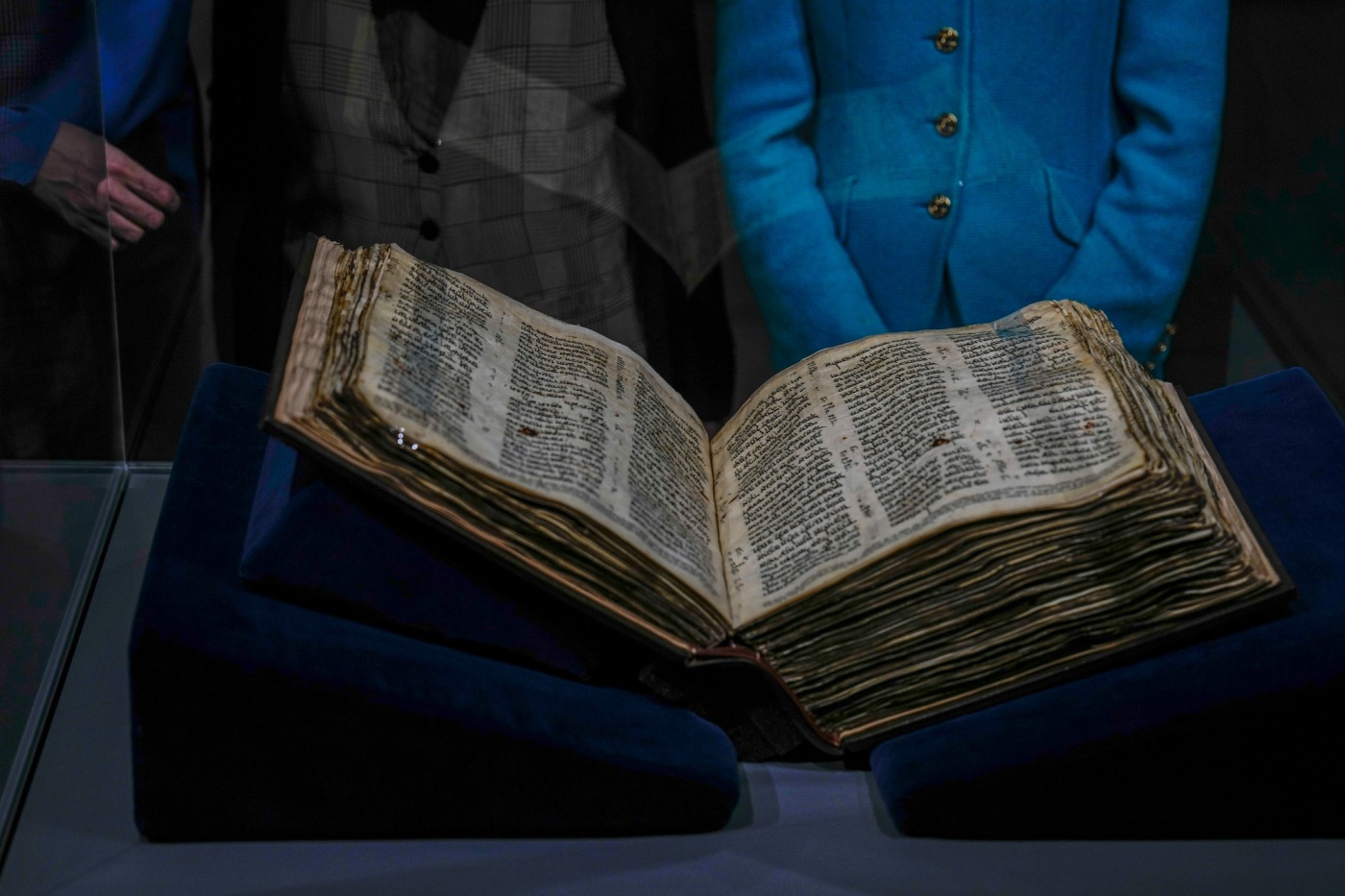
By Ilan Ben Zion | Associated Press
JERUSALEM — One of the oldest surviving biblical manuscripts, a nearly complete 1,100-year-old Hebrew Bible, could soon be yours — for a cool $30 million.
The Codex Sassoon, a leather-bound, handwritten parchment tome containing almost the entirety of the Hebrew Bible, is set to go on the block at Sotheby’s in New York in May. Its anticipated sale speaks to the still bullish market for art, antiquities and ancient manuscripts even in a worldwide bear economy.
Sotheby’s is drumming up interest in hopes of enticing institutions and collectors to bite. It has put the price tag at an eye-watering $30 million to $50 million.
On Wednesday, Tel Aviv’s ANU Museum of the Jewish People opened a week-long exhibition of the manuscript, part of a whirlwind worldwide tour of the artifact in the United Kingdom, Israel and the United States before its expected sale, on Wednesday.
“There are three ancient Hebrew Bibles from this period,” said Yosef Ofer, a professor of Bible studies at Israel’s Bar Ilan University: the Codex Sassoon and Aleppo Codex from the 10th century, and the Leningrad Codex, from the early 11th century.
Only the Dead Sea Scrolls and a handful of fragmentary early medieval texts are older, and “an entire Hebrew Bible is relatively rare,” he said.
Starting a few centuries before the Codex Sassoon’s creation, Jewish scholars known as Masoretes started codifying oral traditions of how to properly spell, pronounce, punctuate and chant the words of Judaism’s holiest book. Unlike Torah scrolls, where the Hebrew letters are devoid of vowels and punctuation, these manuscripts contained extensive annotation instructing readers how to recite the words correctly.
Precisely where and when the Codex Sassoon was made remains uncertain. Sharon Liberman Mintz, a senior Judaica specialist at Sotheby’s, said that radiocarbon dating of the parchment gave an estimated date of 880 to 960. The codex’s writing style…
Read the full article here






